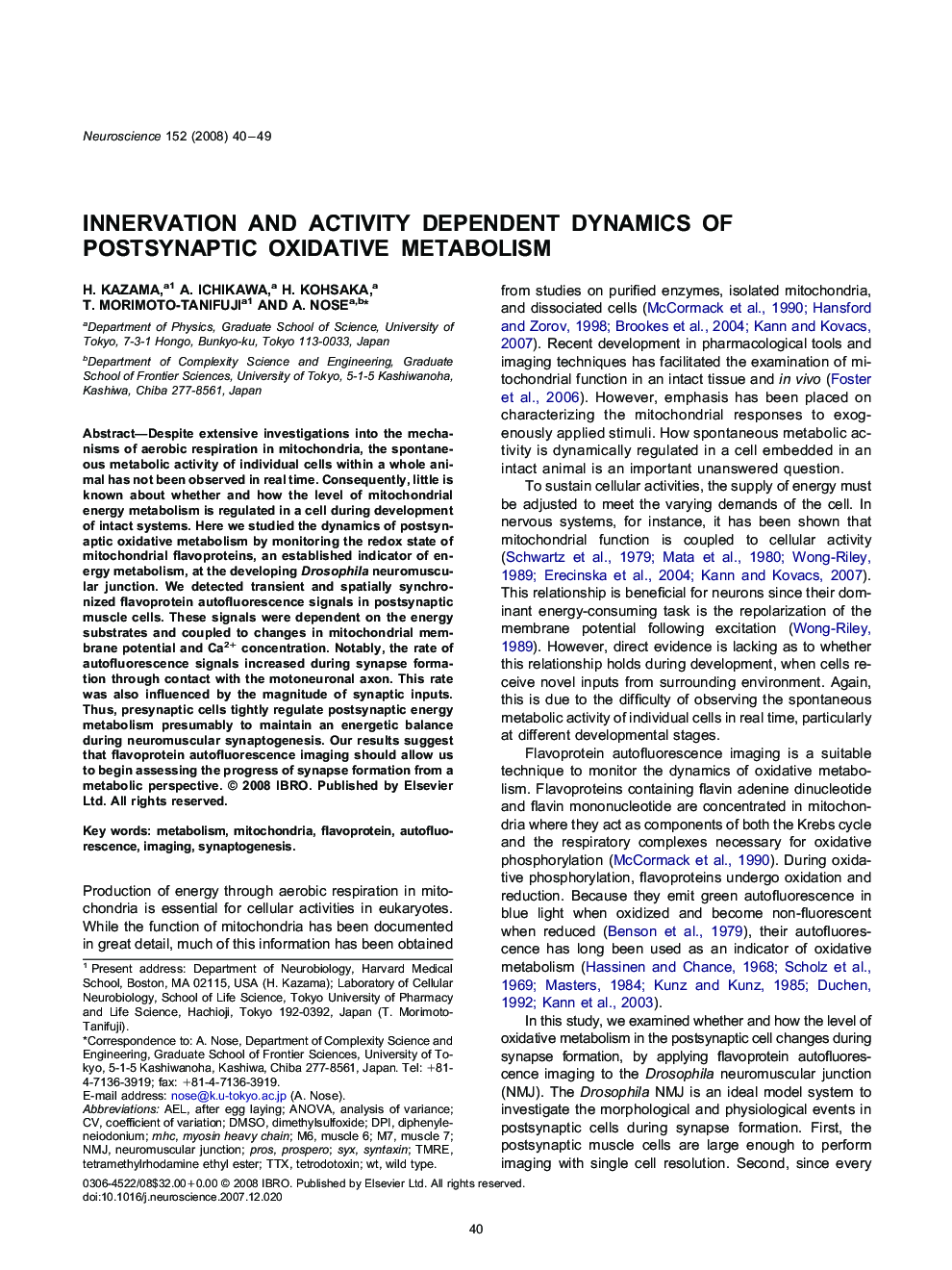| Article ID | Journal | Published Year | Pages | File Type |
|---|---|---|---|---|
| 4342176 | Neuroscience | 2008 | 10 Pages |
Abstract
Despite extensive investigations into the mechanisms of aerobic respiration in mitochondria, the spontaneous metabolic activity of individual cells within a whole animal has not been observed in real time. Consequently, little is known about whether and how the level of mitochondrial energy metabolism is regulated in a cell during development of intact systems. Here we studied the dynamics of postsynaptic oxidative metabolism by monitoring the redox state of mitochondrial flavoproteins, an established indicator of energy metabolism, at the developing Drosophila neuromuscular junction. We detected transient and spatially synchronized flavoprotein autofluorescence signals in postsynaptic muscle cells. These signals were dependent on the energy substrates and coupled to changes in mitochondrial membrane potential and Ca2+ concentration. Notably, the rate of autofluorescence signals increased during synapse formation through contact with the motoneuronal axon. This rate was also influenced by the magnitude of synaptic inputs. Thus, presynaptic cells tightly regulate postsynaptic energy metabolism presumably to maintain an energetic balance during neuromuscular synaptogenesis. Our results suggest that flavoprotein autofluorescence imaging should allow us to begin assessing the progress of synapse formation from a metabolic perspective.
Keywords
DPIProsperoafter egg layingAELTMRENMJTTXSynaptogenesisDMSONeuromuscular junctiontetramethylrhodamine ethyl estertetrodotoxinanalysis of varianceANOVAImagingDiphenyleneiodoniumDimethylsulfoxideMyosin heavy chainsyntaxinsyxCoefficient of VariationProSFlavoproteinAutofluorescenceMetabolismMHCMitochondriawild type
Related Topics
Life Sciences
Neuroscience
Neuroscience (General)
Authors
H. Kazama, A. Ichikawa, H. Kohsaka, T. Morimoto-Tanifuji, A. Nose,
